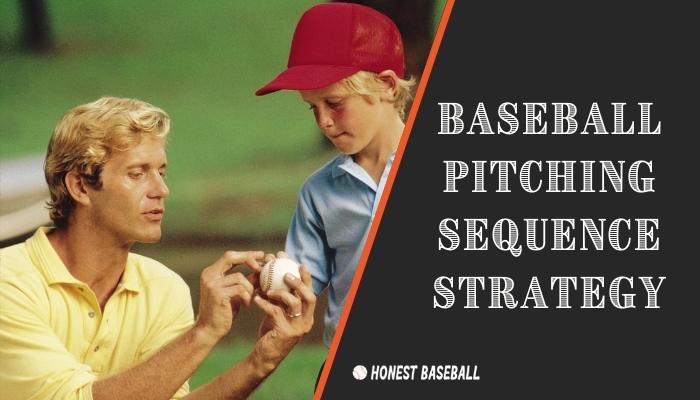How do you set your plan to pitch the best pitches to get the highest result? Do you know how to set the best baseball pitching sequence strategy to retire a batter?
If you are new to baseball or are a parent of youth baseball players, you should know how to train your kids. As baseball pitching is one of baseball’s essential and top skills, having strategic knowledge is a must to retire a hitter.
I do believe professional baseball pitchers are not likely to have lackings of strategic ability. As a youth baseball coach, I would like to teach youngsters some effective baseball pitching sequence strategies.
Hello James, this guide would be a great way to teach your son some great baseball pitching strategies out there.
What is Pitch Sequence Strategy?
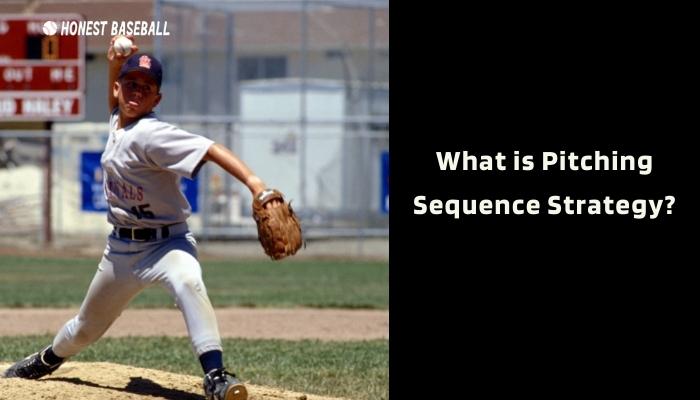
In simple words, the pitching sequence strategy is how to plan how to retire the hitter or influence his behavior from the first to the later ones.
This includes keeping the hitters uncomfortable on the plate. Also, keep them off-balance as well. Sometimes, you need to take attacking mode, and sometimes, you need cunning pitches to throw.
You have to know several types of pitches, like fastballs, curveballs, changeups, sliders, knuckleballs, etc.
The ability to pitch any pitch at any time is an example of a good pitching strategy. By the way, there are several things to follow to plan for an effective pitch sequence strategy.
Additional Read: What Is The Difference Between A Slider And A Curveball? Learn From A Coach
A Few Things to Keep in Mind to Develop the Best Game Plan
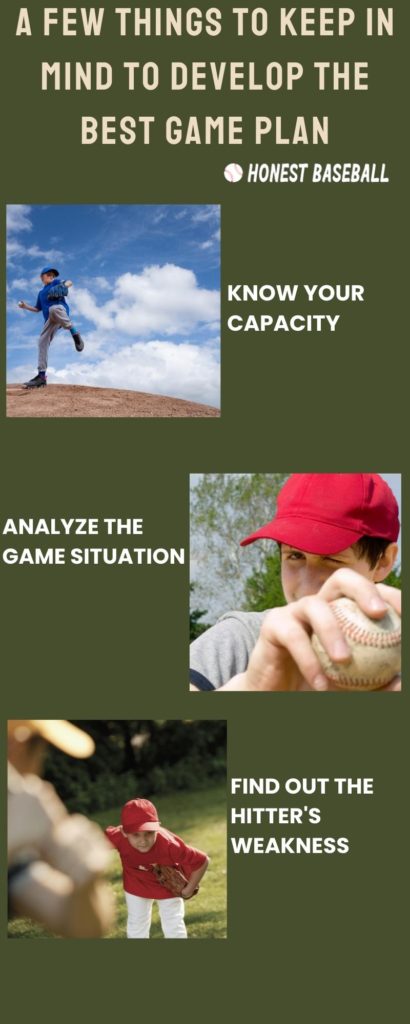
This pre-part of the game is too crucial for any type of player, whether he is a batter or pitcher. So there is no chance to jump into the game, and you will get a positive result.
That is why you must determine a precise game plan before planning your pitching sequence strategy. Here you got to go.
Know Your Capacity
As a pitcher, you must develop your skill set, and know your capability on what you can do. Know what pitches you throw the best.
Keep updated with your pitching speed knowledge and variation you can implement. Know your strength.
Analyze the Game Situation
It is not preferred that you use the same strategy for all situations. That is why learning and analyzing ability about the game situation is a must-have skill.
Check out the current standings in the game. Check out the person who is on the plate. Have you ever been the one who had to confront the hitter?
How much of a bad outcome are you able to stomach? Or, how can you stop the runner from reaching home plate or the hitter from scoring any runs?
Find Out the Hitter’s Weakness
Last but not least, rather one of the most important aspects. Find out the hitter’s weak points. See which type of batting style he follows. Follow his stance and hand-eye coordination.
See his swing. Is it an uppercut or pull? Does he swing slow or fast? Is he an inside-out batter or an all-rounder?
You will surely find something crucial that will help you get the batter fool. This will help youngsters to understand the plan development strategy well.
Clayton Kershaw is one of the greatest pitchers in MLB history. See some of his great curveball strikeouts that he got with confidence.
Baseball Pitching Sequence Strategy: How You Can Plan
There can be several plans and sequences followed by a pitcher. All will not be the same for all professionals.
But, as a young baseball pitcher, you should make sure the youngsters go through some basic strategies. These will help them to develop their base of pitching, analyzing ability, and so on.
By the way, you have to develop the plan based on the batter’s stance, psychology, and approach. It is not a fixed thing that you will just use over time.
You have to change your strategies as well. Let’s see how you utilize your senses with some basic strategies.
By the way, as a pitcher, you must go into some solid plans so that a positive result comes.
Don’t Expose Yourself
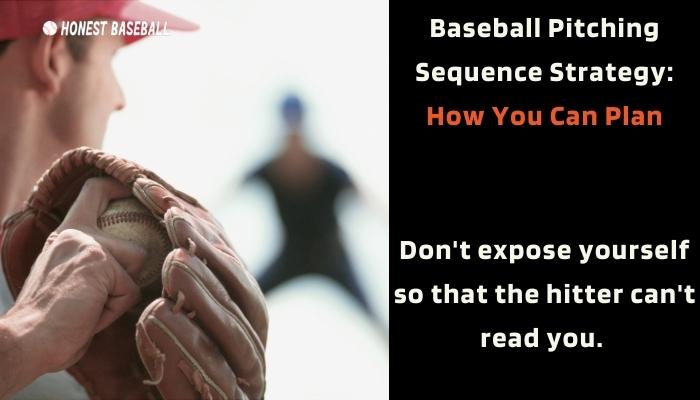
The very first strategy you should take on not exposing yourself. As a young player, you might have to hurry, or even expose yourself with your best arsenal to get results.
But, don’t be in a hurry, rather be quiet and calm. Try to master at least two balls, like a fastball, or a curve. Because, if you always start with a fastball or a curveball, the hitter can easily read you.
On the other hand, you will find many hitters who want to hit your ball, even exposing their weaknesses. Take the opportunity and utilize it to retire or make him uncomfortable.
Additional Read: What Is A Cutter Pitch?
Watch Batting practice, and Take Note
A hitter has a regular hitting spot that he is habituated to hitting through. You can get this if you play a lot against his team. Aside from this, another big chance to read the opposing batters by watching their batting practice.
By watching their batting practice, you can read their natural moves.
This will help you to analyze the batter’s swing length, whether pulling the pitches or not, and their stance after swinging the bat. All this data will help you to determine your pitch type to throw.
Take note of all information.
Keeping the Opposing Batters’ Position in Mind
All batters are not the same. From number 1 to number 5 are the best hitters in the offensive team. On the other hand, after the number 5, they are not that good hitters.
You will get advantages if you can note the hitter’s order. The strategy for pitching will not be the same for the top-order hitters and lower-order hitters.
Even with the low-order hitters, you can go directly with fastballs consistently through the strike zone.
Learn About the Hitter’s Hitting Statistics
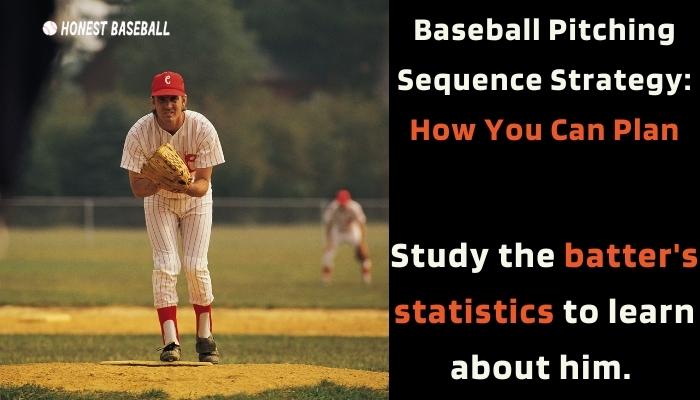
It’s not preferred that you will pitch weak against a lower-order batter, and you will give your best to the top-order. But, letting know the batter’s state will give you an added advantage to plan the strategy well.
By the way, if you are a high-school-level player, you will get recorded states of them. You can determine the hitter’s ability in three categories from the state.
The three categories are power hitter, fast runner, and patient on the plate. All along with the state, you can plan different strategies for the different hitters.
Measure and Analyze the Outfield Wall
The nearest outfield wall is easier to reach by the batter than the farthest one. Your strategy should be such that the batter can’t hit the ball toward the nearest one.
Try to insist that he must hit the ball to the farthest wall. Also, play psychological games with him.
Challenge him to hit the farthest wall. Most of the time, he will fail to do so. As a result, the outfielder might get a fly ball to catch.
You may find helpful: Baseball Field Overview | A Brief Guide To Baseball Fields | Honest Baseball
Know the Path of Wind
Like football and other bat ball games, the wind is one of the catalysts in the baseball field. The player who plays in favor of the wind gets more advantages than the player who is the opposite of the wind.
By the way, even if you are in favor of the wind, you can produce more pace in throwing fastballs. This will give you extra benefits against comparatively weaker hitters.
Check the Playing Surface State

If the grass on the infield is short, the ground ball will get more speed and get to the outfield faster. This will enhance the chance of getting runs by the offensive team.
On the other hand, if the grasses on the infield are long enough, the ball will not get more speed after touching the ground. As a result, your infielder can have an increased chance to field a ground ball easily.
In this case, the ground surface state helps you to decide whether you pitch a ground ball or not.
Analyze the Batter’s Stance in the Batter’s Box
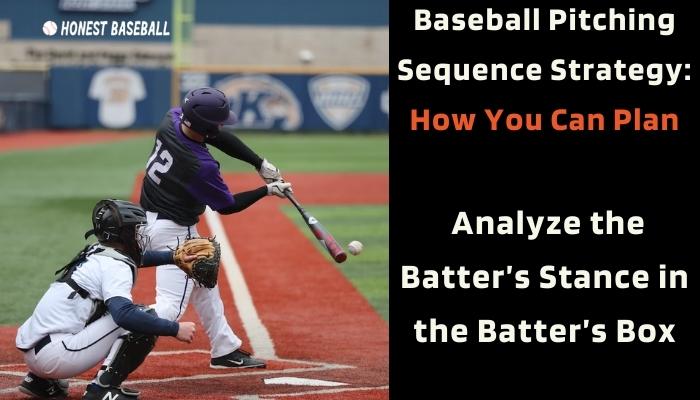
Check to see what the hitter is doing with their stance when they are in the batter’s box. Where exactly on the box can you find him—the front, the back? In the vast majority of situations, batters stand in the back.
If so, you can employ a curveball. It will be difficult for him to make contact with the ball.
On the other side, you should go with your fastball if the hitter is standing in front of the batter’s box. If he moves closer to you, you will have a far better opportunity to outplay him with a fastball.
In addition to these two things, you need to examine whether or not the hitter has a closed stance while they’re at the plate. If you choose a tight stance, you should be able to quickly penetrate an inside pitch if the chance presents itself.
In the event that this does take place, the hitter will have a very tough time striking the ball. A moving two-seam fastball might be an excellent asset to have at your disposal in this scenario.
Does the Batter Have a Normal Stance?
In this case, you must understand the batter is better at hitting. He has the ability to handle different types of balls. Actually, he will not let you understand his weakness.
In such a case, try to remember his state. What does the analysis say about him? Think about the other pitchers who pitch against him on your team.
Also, see his capability of handling lower pitches, fastballs, inside pitches, etc. From all information, you will have an insight into the batter for implementing the best baseball pitch sequence strategy.
See if the Hitter Has Long Slow Swing
The majority of the time, batters who have a lengthy swing also have a sluggish swing. There is a void in his physique in this particular instance.
You have the ability to seize the chance. An inside fastball has the potential to have a significant effect in this scenario, preventing the hitter from hitting the ball and preventing runs from being scored.
Even if the hitter has a long yet rapid swing, the opportunity will still be created by this. If he manages to make contact with the inside fastball, there is a chance that it will be a foul ball.
Don’t Waste the Pitches
Do not, under any circumstances, throw away any pitch. Make an effort to get the batter to swing at the terrible deliveries. Get a jump start on the competition. Put him under strain by your actions.
Make it a goal to acquire two strikes as quickly as you can. You will find success as a result of it.
The 3 Basic Strategies of Pitching
Here are three basic tips for pitching sequence strategy, so that you can utilize your pitching well. Mental strength and determination will help you to bring results through the strategies.
Get the First Pitch Strike
Getting the first pitch strike (FPS) is one of the biggest catalysts of getting the batter out fast. Take the strategy for FPS, obviously.
Okay, you might also consider the first two balls for getting one strike. Don’t be stressed about the FPS, by the way. So you got the point? Your objective should be to get one strike in the first two balls.
But, a first-pitch strike will be crunchy.
Get Out the Leadoff Hitter
The leadoff/first hitter is always the best hitter and most base stealer in the offensive team. You will see from the MLB states that the leadoff hitters steal the most bases. Also, they get the most runs as well.
So you know what your target is. As a pitcher, you must target the leadoff hitter to retire as early as possible.
If you think retiring the batter would be hard, you want him to keep on the plate by letting him not hit the ball, it will produce more walks.
Don’t be obsessed with letting the batter not hit. Let him hit, and the fielders will help you there. Because, the seven fielders and the catcher are there to field. It’s part of baseball.
So, strike out the hitter, or let them hit. The result will come.
Go Ahead in the Pitcher’s Count
Getting ahead of the pitcher’s count is always advantageous for the pitchers. As a result, the batter will face more pressure to expose himself.
And you know, the more pressure you can create on the batter, the better you will get in return. In simple words, getting ahead is to get two strikes as soon as possible.
The following chart will show you the effect of getting two fast strikes.
The following chart is made based on the last MLB season(2021). Here you see, the batting average of a batter is the lowest when the pitchers get 0-2 count.
Okay, that doesn’t mean you must pitch the ball and will get two fast strikes when you want. This is a game, and you will not get success with every ball.
By the way, getting two fast strikes will surely bring more advantages, no doubt.
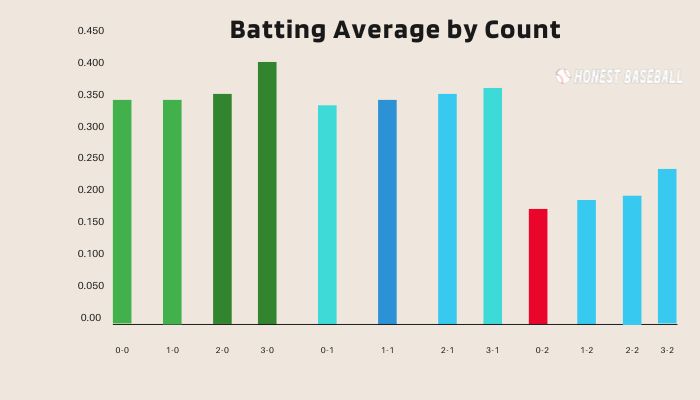
What to Throw to Different Types of Hitters?
This is one of the crucial aspects to understand the hitter’s type. You will get this from the hitter’s state.
However, you need to use a different arsenal for different types of hitters. Here you got to go with some tips for throwing pitches against various types of hitters.
Pull Hitter
When facing a pull hitter, you should focus on throwing them fastballs. Fastballs should be thrown both in and out of the strike zone when your side is ahead in the count.
This will make it easier for you to establish the pitch as an outpitch.
Upper Cut Swing Hitter
In most cases, batters will utilize their dominant hand to produce a very little loop in order to execute an uppercut swing. When engaging in this kind of hitting, you should strive to catch up with the batter by hitting hard up and in.
In addition to that, make use of a throw-off speed that is low and away. If you are a right-handed pitcher facing a left-handed batter, you should keep the off-speed ball low and in the strike zone. Maintain the ball’s position inside the striking zone so long as you are doing so.
Slow Bat Hitter
Throw all fastballs directly at the batter who is swinging a sluggish bat. They should not be shown any leniency. Simply go at your very top speed so that they are unable to control the ball.
Keep the ball below the striking zone if you wish to throw slower or faster than normal balls. At least two of your strikes need to be in a row. This increases the likelihood of getting a strike when the hitter is batting.
Inside-Out Hitter
The inside-out hitters are slightly different from others. They have a great knack of hitting. The ball is hit, and the bat stays slightly longer.
As a result, inside-out hitters love outside pitches.
So, the pitchers should take advantage and throw the inside ball below the hands of the inside-out pitchers. When your team is ahead in the count, unleash all fastballs inside and get the batter out with the best pitching sequence strategy.
All Around Hitter
The moniker gives some indication of the batter’s skill. The hitter who is good at everything is the most difficult one on the team to strike out.
Actually, the all-around batter is the one who is believed to be the greatest hitter on the team since they can hit in any direction.
Use a variety of pitches to produce results, even if getting him out will be difficult. Maintain a low trajectory with the ball, six to eight inches below his striking zone.
Pitching Sequence Strategy: Some Additional Strategic Moves to Pitch
The situation is not always the same. So, you have to make a decision based on the situation you are falling in.
Here are some strategic decisions you might employ in different particular situations.
Take the Chance of Batter’s Count Ahead
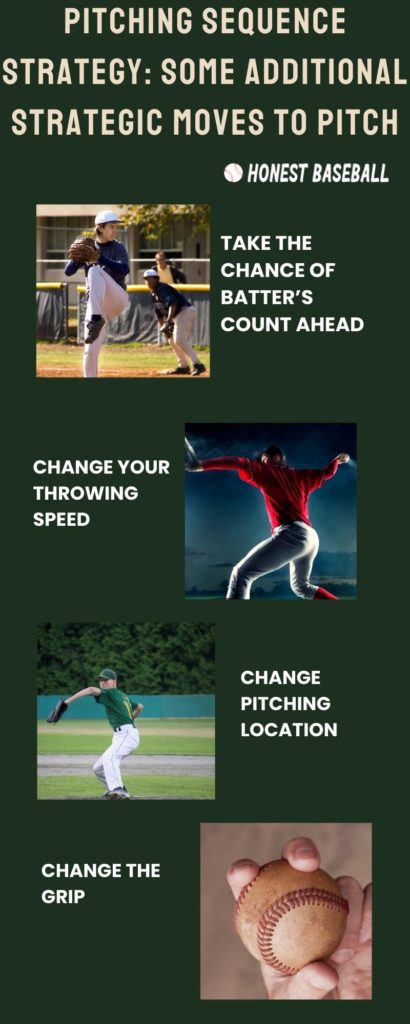
As I mentioned before, the player who is ahead of the count will get more advantages. In this situation, you have to take risks. Because I am talking about the batters ahead of the count.
In the situation of 2-0, 3-0, 2-1, etc., The batter will be comparatively relaxed and will not expect something risky from your side.
The hitter generally, often shrinks their zone, and you can take the opportunity. You can throw it into the zone, and it might bring a positive result.
Change Your Throwing Speed
Changing throwing speed is a common but unpredictable strategy for batters. So, change your pitching speed often. But, remember one thing, don’t adhere to a particular pattern.
Sothe, the hitter will easily get the pattern and there is no result at all. Change the speed in different patterns so that the hitter can’t get the pattern anyhow.
Change Pitching Location
Like changing pitching speed, change your pitching location as well. You can consistently throw it from your knee area. You can change your target to the strike zone and switch the location to inside, and outside.
Also, if you throw a lot of inside pitch, the batter will, at a certain time, expect an inside ball continuously. In this case, any type of change, like outside pitch and ball location, will give you better results to make the batter off-balance.
Change the Grip
See, you might be highly skilled in throwing a two-seam fastball. If you establish this scene to the batter, he can easily play your fastball. Try to change the grip often. A four-seam fastball should be thrown to off-balance the batter.
The different grip will bring a different look to the fastball to make the batter off-balance.
There are different types of baseball pitching pitchers use. You may check out our guide on “best pitches to throw” to get more ideas about the pitches.
What to Do When Nothing Works?
The game is played by humans, not machines. So, it is too common to have a bad time in-game. Like, even the best players face a 25% bad time in their pitching.
Just think, 75% of the time they get success. So, what to do when the 25% bad time comes? Nothing. Just be mentally strong, and stay strong. With time, the good times will be back soon.
Try to enhance your visualization. The sense will grow, and you will gain more success.
Frequently Asked Questions
- What are pitching strategies?
There are main basic goals that come with the pitching strategies. They are-
- Make one of the first two pitches a strike.
- Try to retire the leadoff hitter fast each new inning.
- Take the lead in the pitching count.
- What is the best combination of pitches?
In my experience, any fixed combination of pitching will be adjusted by the batters after a certain period. Though this happens, the fastball-slider-changeup cycle could be more effective anyway.
- How do pitchers know what to throw?
Basically, pitchers get signals from the catcher behind the plate. The catcher is probably the principal catalyst to influence the pitcher’s pitching and location selection.
Catchers generally give signals by hand-signs that influence the pitcher to set their pitching strategy instantly.
Wrap Up
I don’t know why, but youth baseball coaches mostly skip the area of pitching sequence strategy. But, it is important to build up future great pitchers from among the youths.
However, along with physical strength, and skills, good mental condition is important to develop a great plan and strategy.
Youngsters must be treated from the beginning to develop their pitching strategy by the coaches. So, follow the strategies to develop your kids’ pitching ability and skill in the long run.
Topic You Also May Like:
Pitching Drills For Accuracy |More Perfection
Slow Pitch Softball Pitching | Become The Pitching Master!
How To Increase Pitching Velocity By 10 MPH | 25 Proven Tips
Are Pitching Machines Good For Batting Practice?
How To Practice Pitching Alone For Baseball?

Hello everyone. My name is Jason Butler, and I live in California, America. I was a professional AAA Minor League Baseball player. I lost my chance of playing MLB for injury issues, but I did not lose my love for baseball. I attended the coaching training program and am now working as a coach in a small school in San Diego.
I always love to share my experience and knowledge if that can help you. Play baseball, and stay fit.
